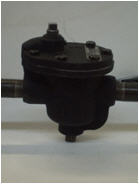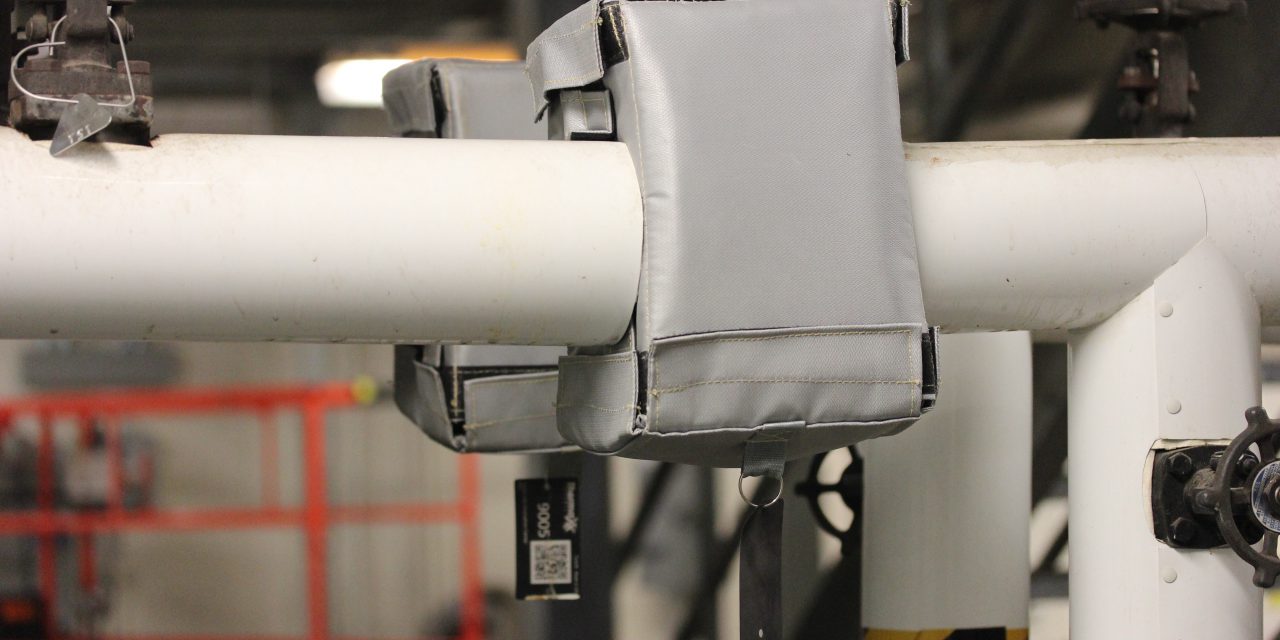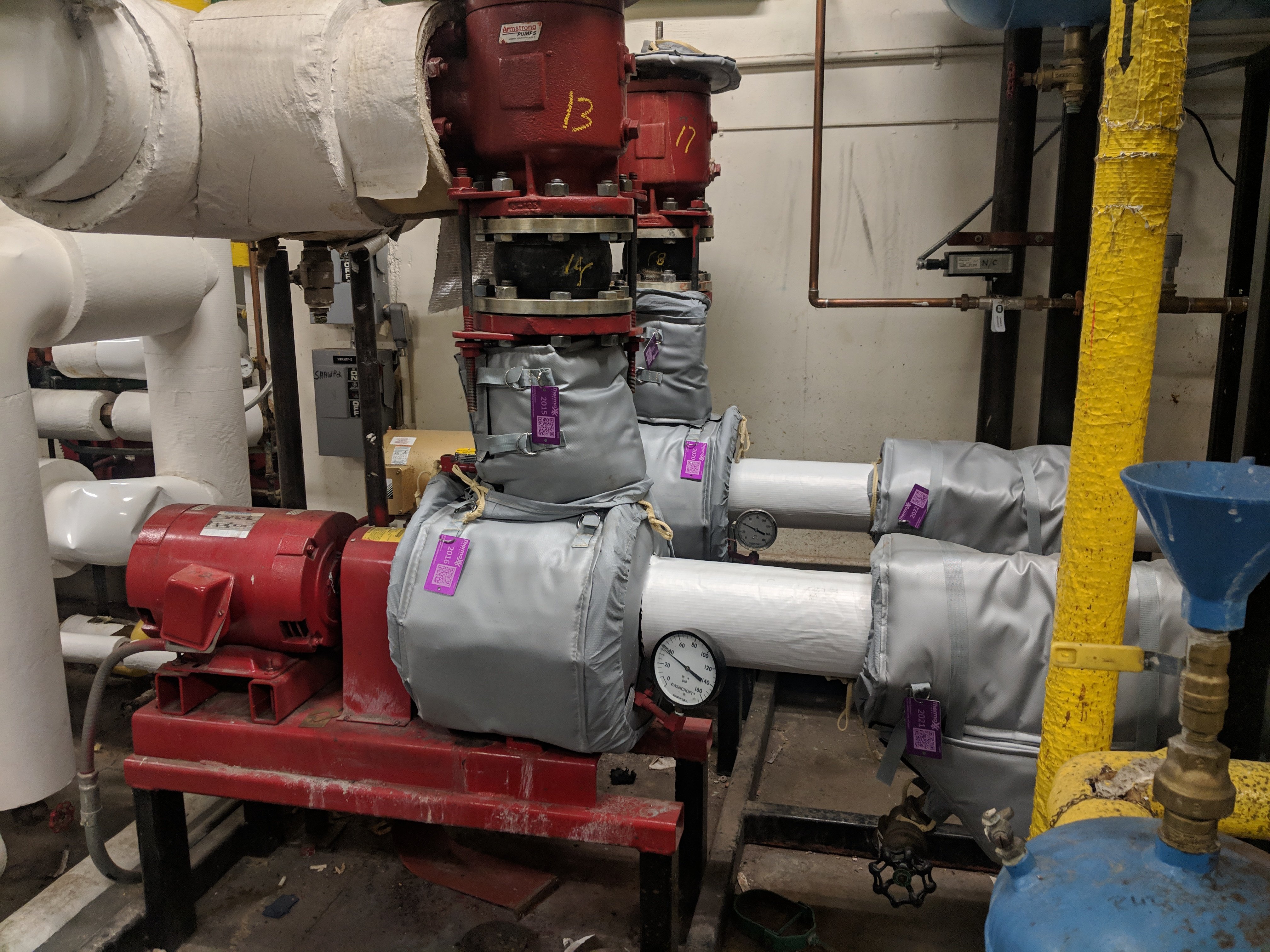Why Traditional Hard Insulation Is Costing You Money
A Connecticut university used to have a serious energy loss problem. One example of this was a valve in the mechanical room. Although hard insulation was dug out to form the shape of the valve, it still left the valve bonnet exposed, leading to significant heat loss. The temperature of the valve bonnet was 224 degrees. After installing a removable insulation cover, the surface temperature was reduced to 105 degrees. The removable insulation prevented the valve bonnet from losing 500 BTUs an hour, resulting in a savings of roughly $450 a year. And that’s just one valve!
Choosing the Right Type of Insulation
There is no one-size-fits-all answer when it comes to industrial pipe insulation. Hard or conventional insulation works well for mechanical components that don’t require regular inspection or maintenance, such as smaller diameter pipes and fittings. On the other hand, removable insulation is ideal for valves, steam traps and large diameter steam piping, which often require the removal of insulation for regular maintenance.
When To Use Hard Insulation
Hard insulation, consisting of products such as fiberglass, calcium silicate or mineral wool, is commonly used to insulate most mechanical components such as pipes, fittings and valves. But as we saw in the previous example, it’s not always the best tool for the job. Conventional pipe insulation can come with or without an outer covering, usually consisting of a paper or foil backing. In some cases these materials are covered with either a metal or PVC jacket. Hard insulation is suitable for the following components:
- small diameter pipes and fittings
- mechanical components that do not require regular inspection or maintenance
When NOT To Use Hard Insulation
As noted above, conventional insulation is not well suited for mechanical components that require routine maintenance, such as valves, steam traps, flanges or large diameter steam piping. These components are rarely (or in most cases only temporarily) insulated.
In many cases valves are initially insulated. However, over time maintenance personnel strip off the insulation for inspection or maintenance. It’s not uncommon for the insulation to remain on the floor and the valve or steam trap to never get reinsulated. The surface temperature on these un-insulated components can very from a couple hundred degrees up to several hundred degrees. As a result, in some cases mechanical room temperatures have reached in excess of 120 degrees and a vast amount of energy is wasted.
Removable Insulation Pads
Where valves, flanges and steam traps require routine inspection it is beneficial to have insulation that can easily be taken off and reinstalled. Removable insulation pads are ideal for this job. These removable pads consist of silicon impregnated cloth, needled fiberglass insulation, Kevlar thread, Velcro and well placed straps and snaps. The removable pad allows maintenance personnel to go into a mechanical room, remove the insulation, inspect or repair the mechanical component and easily reinstall the insulation pad. This prevents further heat loss and creates a safer work environment.
Common areas where removable insulation pads should be used are:
- Valves
- Steam Traps
- Flanges
Valves
Like in the case with the Connecticut university, valves are a common opportunity to save energy and money with removable insulation.
| Before | After |
 |
 |
Steam Traps
Steam traps rarely get insulated because of the amount of maintenance that they require. There are no hard insulation products for insulating steam traps. Because they typically go uncovered a tremendous amount of heat loss occurs. In the steam trap case, removable insulation pads are the only alternative.
| Before | After |
 |
 |
Flanges
Typically flanges are not insulated. Conventional insulation is made to abut the flanges, leaving the flange itself uncovered. This leads to significant heat loss. This is another situation where removable insulation is ideal, as shown in the picture below.
 Removable flange pad with conventional fiberglass covering
Removable flange pad with conventional fiberglass covering
Conventional insulation serves an important purpose, such as insulating mechanical components that do not require routine inspection. However, conventional insulation is not the best alternative when it comes to mechanical components that require routine maintenance. The removable and reusable flange insulation blanket is the best alternative, providing maintenance professionals an easy way to remove and reinstall the insulation.

Thermaxx Jackets
Thermaxx Jackets was founded over 25 years ago with a single purpose: to help our clients save energy with removable insulation blankets when traditional stay-in-place insulation is not practical. Our dedication to this purpose has resulted in a long list of customers who have saved money thanks to Thermaxx Jackets! Combining expertise in heat loss, wireless monitoring, insulation design, and several other disciplines, we’ve become the #1 provider and fabricator of removable insulation jackets and covers. The Thermaxx Sales and Service teams are experienced and trained to provide clients with the most timely and cost-effective solution.
Categories
- removable insulation
- thermaxx jackets
- energy savings
- savings
- energy efficiency
- safety
- pipe insulation
- energy
- case study
- insulation materials
- thermal insulation
- heat loss survey
- heat loss
- energy loss
- hot insulation
- fiberglass
- installation
- steam
- New York
- custom insulation
- NYC Case Study
- boiler
- university
- Connecticut
- reusable insulation






